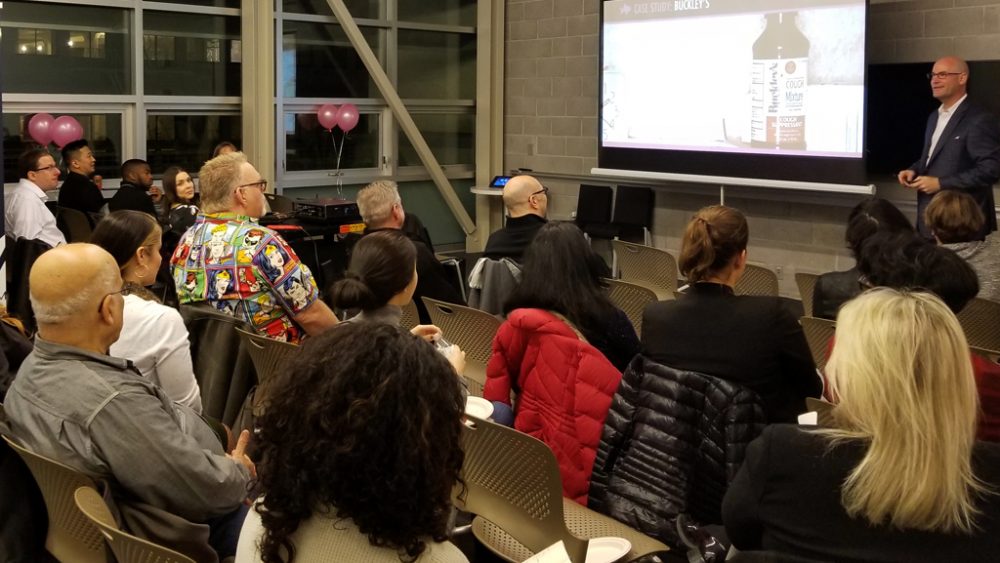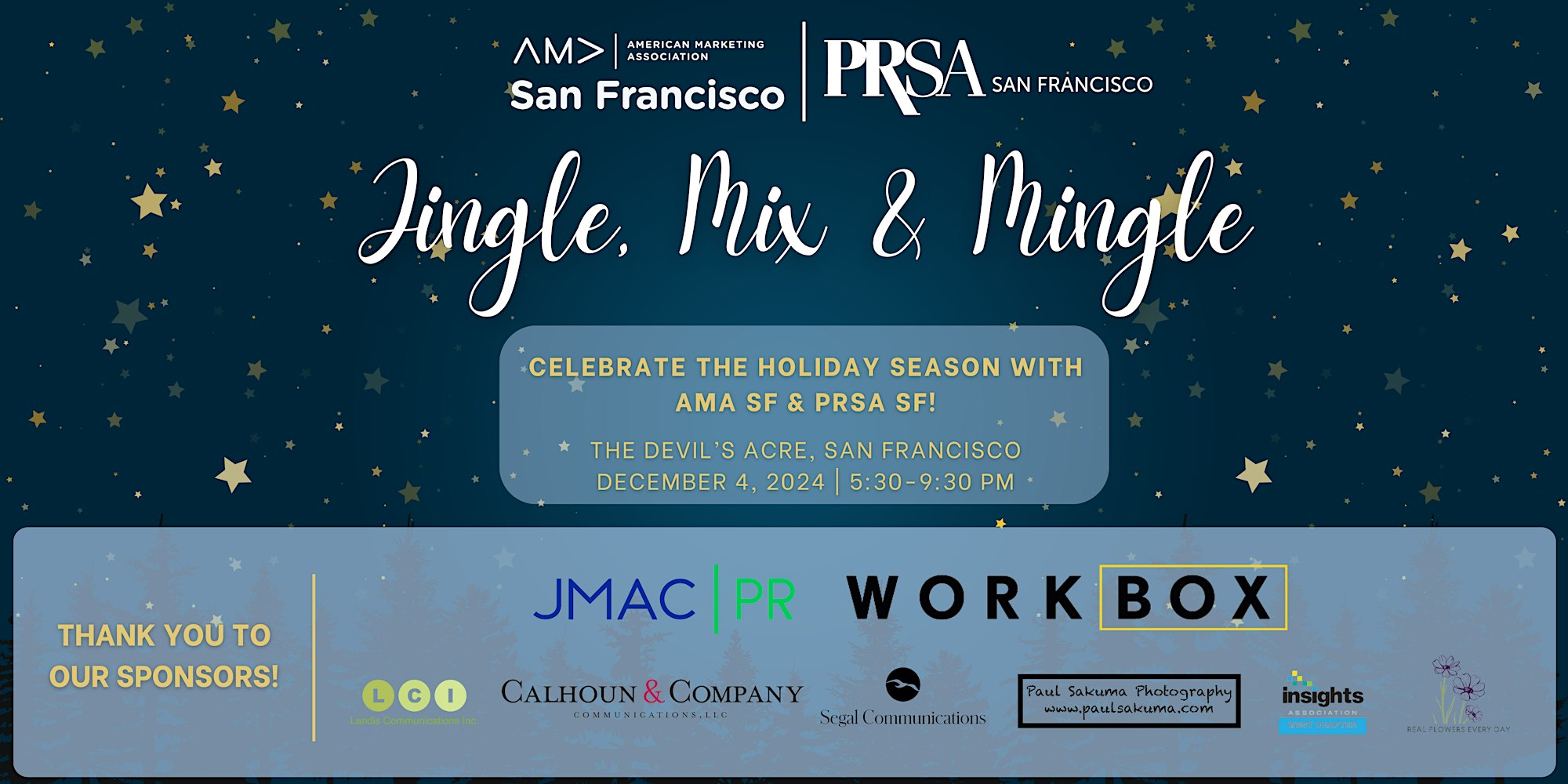In today’s hyper-competitive, vastly connected world, it’s more critical than ever for organizations to stand out. Consumers have increasingly more opportunities (particularly in a digital context) to select their preferred brands from a sea of choices. So how do you increase the chances they will choose yours over the rest?
At this event, Stan Phelps—a seasoned TEDx speaker, Forbes contributor, and IBM Futurist—shared how organizations should flaunt their weirdness to achieve differentiation, as detailed in his book co-authored with David Rendall, Pink Goldfish: Defy Normal, Exploit Imperfection and Captivate Your Customers.
Key to achieving a successfully differentiated brand identity is the ability for an organization to flaunt its flaws instead of trying to fix them, to amplify its wacky traits instead of hiding them. By leveraging its uniquely weird qualities, Stan posits that an organization can stand out from the crowd and gain a competitive edge.
The five factors you need to thrive
Pink Goldfish is one in a series of nine Goldfish books, each focusing on a critical element of differentiation. The goldfish metaphor relies on a bit on science: The average length of a goldfish is three inches. But under the right conditions, it can grow to become much larger. (The world’s largest goldfish, Stan noted in genuine awe, is twenty inches long!) It’s possible to ascribe the same five factors that determine a goldfish’s size to an organization’s success. The factors are listed below, along with some additional thoughts regarding using these factors to build a business plan (which are my own).
- The size of the bowl
Before starting a business, you should know your market size: how many potential buyers are in your target area and the value of your service or product to that population. Once you understand who your target consumers are and the likely penetration rate, you are well on your way to setting realistic expectations about your future revenue and growth.
- The number of other goldfish in the bowl
The more fish there are (competitors), the harder it is to stand out. By spending a little time identifying who is competing for your market share, you get a better idea of how challenging it will be to drive business to your company. For example, if you’re setting up a store to sell widgets, find out if there is another store nearby that sells the same widgets. You might want to place your store in an area that’s underserved, where you’re not competing for the same foot traffic.
- The quality of the water
Is the water rich in nutrients? How clean is it? For the non-fish in the comparison, this equates to the economy: The healthier the economy, the higher the consumer confidence, and the more likely it is that consumers will spend their money on your goods and services. This factor tends to ebb and flow, so understanding where the economy is headed in the short and long term can help you make the right investment decisions based on anticipated consumer demand.
- The first 120 days of life
The first months are critical to survival, whether it be of a fish or a business. There are foundational considerations that must be accomplished, aside from marketing, to get the company up and running: permits, insurance, contracts, employee benefits, and the like. You can find tons of resources on the Internet on what to do during this critical period.
- Genetic makeup
The weaker the goldfish’s genes and the more it’s like other goldfish, the more likely it won’t grow past the average size. The lesson here: Businesses must find a way to differentiate from other businesses if they want to grow and thrive. Make sure you’re a pink goldfish in a sea of yellow ones; you’re bound to get noticed.
But here’s the thing. Once established, businesses likely have control over only one of these factors, which is the key concept of the book. Take a moment to think about this. Look back at the five elements and try to identify which one can be altered. If you guessed the last one, you are one smart goldfish!
How to become a pink goldfish
“What makes you weird or different?” “How can you amplify the thing that makes you weird?” These were the questions we pondered as we learned how weirdness is wonderful while munching on fish crackers. After all, this event could be as much about creating a personal brand as it was about creating a corporate one.
According to Stan, there are two key behaviors to differentiation: (1) Accentuate what makes you different and (2) Avoid doing what is normal.
For their book, Stan and David selected 250 cases studies, identified their commonalities, and applied their pink goldfish framework to them, which consists of a set of seven actions, otherwise known as FLAUSOM*:
- Flaunting: This is the cornerstone of the pink goldfish idea. You want to accentuate the qualities that make you different—illuminate your flaws—and behave like a peacock or polar bear, not like a cow or zebra. (More on that in the book.)
- Lopsiding: This action might take the most courage. This is when you double-down on the unique qualities that make you odd. This is flaunting to the extreme. When you lopside, you cater to your best clients, the ones that like you just the way you are.
- Antagonizing: Why not have a little fun with those who are not in your target market? You can’t make every consumer happy, so focus on the ones that you want to attract, and forget about all the rest. By antagonizing, you embrace the criticism. You are unapologetic.
- Withholding: This is about offering fewer options. And while others are expanding, you are deliberately shrinking. This action relies on the behavioral phenomenon that providing too many options can be paralyzing to consumers. By offering less, you can make their choices easier.
- Swerving: Stan left that one for us to figure out. (So again, to the book.)
- Opposing: When others follow a trend, you do the opposite. Don’t be scared to be the one that swims against the current. Be contradictory. Be dissimilar in the way you sell or promote your product. You’ll get noticed.
- Micro-weirding: Lean into a strategy or trait that makes you special. Do small things that make a difference. In the book, Stan notes that “itty-bitty actions can have a massive impact.”
To bring these concepts to life, Stan shared some amusing examples of businesses that did the unexpected by applying one or more of these tactics—ultimately increasing brand recognition and engagement.
After what comes how
After an organization learns FLAUSOM, there must be defined periods of Assessment, Appreciation, Amplification, and Alignment. Once you understand your organization’s unique qualities, work on appreciating and accentuating them, while minimizing some of the things that make it average or normal. Finally, make sure to align the different sectors of your business to support your strategy (e.g., your employees, website, and storefront).
Why pink?
Why pink? That was my first question, and it’s probably yours too. Stan showcases the color as a nod to the co-author of Pink Goldfish, David Rendall, a 6-foot-6-inch, quirky character who lives in a house brimming with female energy. Rather than fight the feminine pull, he decided to embrace it and wears pink (a modern-day metaphor for femininity) practically every day of his life. For David, what others perceive as a weakness can be a strength, and what is weird is wonderful.
Pink Goldfish and the rest of Stan Phelps’ Goldfish series are available on Amazon.
*During the meet-and-greet, Stan shared with me that flausom is a portmanteau, a blending of words to create a new meaning. In this case: flaunt + awesome = flausom. As it happens, flausom is also an acronym. Clever.





Comments are closed.